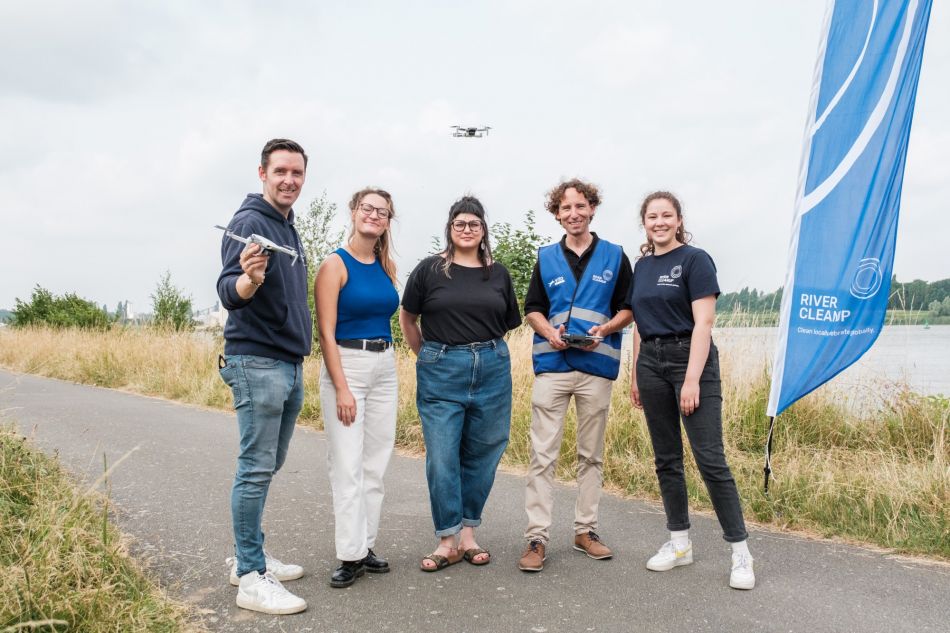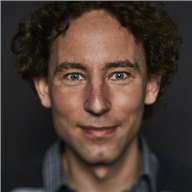Litter on the street, in nature or in rivers and the sea is not only a visible environmental problem – it also costs society a lot of money. But how do you solve it? And can citizens help with that? River Cleanup and VITO joined forces with the aim of optimising clean-up actions by identifying litter on river banks. In the citizen science project Waste Watchers, they collected drone imagery of the banks of the Scheldt in order to identify litter. The imagery was analysed at VITO Remote Sensing and processed into a waste dispersal map that can help identify hotspots and optimize cleanup interventions.
There were almost two hundred of these ‘Waste Watchers’ who took part in the project's public fly-in days which were organised in July and August 2023 or collected drone imagery individually during the summer of 2023. The volunteers received information about the project and its operation, as well as how to control a drone and the accompanying legislation, after which they were each allowed to fly for half an hour along the Scheldt. In addition, at Waste Watchers' request, drone owners were encouraged to submit as many drone images of the river Scheldt as possible.
Drone imagery was thus taken at various locations along the Scheldt by citizens. The imagery was later analysed and processed with artificial intelligence (AI). The aim? To create a digital waste dispersal map for the Scheldt. In so doing, the citizens were not just informed about AI, but were also involved in the development of a new AI application in Flanders – moreover, one with high relevance to society – which is precisely the aim of the Flemish amai! programme. Waste Watchers was one of the five citizen science projects selected from the amai! call in 2022.
8000 photos, 40 kilometres of the Scheldt banks
The project was a world first. ‘It was the first time the general public had been brought in to track down litter with drone imagery,’ says Klaas Pauly from VITO. Why drones? ‘With their bird's-eye view, drones have far better sight than, for example, litter-spotters looking on the ground with their own eyes. For example, drones can discover litter amongst dense growth.’ Waste Watchers worked with small, budget-friendly drones that are easy to control for a wide audience. ‘That was how we avoided high costs and complex permit procedures. Furthermore, these drones are safe and relatively easy to control.’ In total, Waste Watchers delivered more than 8000 drone photos, accounting for 40 kilometres of the Scheldt bank. Details are visible down to half a centimetre on the imagery.
With its Remote Sensing unit, VITO obviously has a great deal of knowledge already in collecting, analysing and processing aerial imagery. But for this project, enough citizens needed to be encouraged to make Waste Watchers a success. Hence the collaboration with River Cleanup, a non-profit that has made it its mission to combat and clean up litter in and along rivers. The organisation is doing this at a global scale. ‘We've only been around since 2019, but we have more than 240.000 volunteers across the globe and we're active in a 100 countries,’ says Thomas de Groote, CEO of River Cleanup. ‘By combining commitment with technology, we want to fight back against litter in rivers everywhere in the world. So Waste Watchers was a perfect fit for our mission.’
Why this focus on rivers? ‘Litter, and plastic pollution in general, is a big problem, and no country in the world can escape it,’ continues de Groote. But where would you start with tackling the problem? In and along rivers, we say. After all, they feed the litter and plastic waste into the sea. So that makes the choice of rivers very rational.’
Among other things, River Cleanup is examining how rivers can be made plastic-free efficiently. ‘We don't just want to clean things up,’ explains Hanne Collette, project leader at River Cleanup. ‘By identifying the spread of litter, we can investigate the influence of things like industry or residences on this. But we can also discover where potential hotspots are located, for example because a lot of litter flows together there. Knowledge of litter behaviour is useful for both prevention measures and clean-up actions. The campaign at the Scheldt was a great test case for us and is a perfect fit for our ambition to get to 100 plastic-free rivers by 2030 and 1,000 by 2050.’
Removing false positives
Waste Watchers was also a scientific research project. Pauly: ‘We wanted to check whether high-quality and reliable detection of litter through drone imagery and AI algorithms was possible. In that sense, this was also a test case from which we could learn from the results to improve our AI models, for example.’ In order to develop an automated litter detection model, the algorithms needed to be trained. ‘This was no small task owing to the almost endless variation in the backdrop to the river banks and to the characteristics of litter. Initially, the AI model produced/indicated a lot of false positives (objects that were incorrectly seen as litter). So we had to remove as many of those as possible.’ As it happens, for training the AI model (further), there was another collaboration with De Lift Education, a school for young people with an autism spectrum disorder that specifically aims to teach IT skills.
Waste Watchers was a world first, a unique project that demonstrates how litter can be tracked down and identified with the help of citizens using drones and AI. In early 2024, this led to the launch of the waste dispersal map for the Scheldt.
Some similar campaigns may follow later along other rivers, at home or abroad. VITO, which manages the analysis and processing of the drone imagery and to develop/deliver/publish the map, is reviewing whether spotting litter using drones and AI can be offered in the future through a more operational service provision. ‘In any case, the research methodology also lends itself to other applications, such as monitoring biodiversity,’ says Pauly. ‘Besides that, it's also particularly suited to STEM initiatives.’
From this perspective, VITO Remote Sensing will actively support a new STEM project in 2024. This specific project emerged in response to the call for STEM partnership projects titled 'STEM for Climate: From Understanding to Action.' The project submission was made through the STEM academy of VLAIO. Led by Spelenderwijzer and through various pathways and collaborations, the STEM initiative will encourage young people to delve into current climate and energy issues. The main objective of this initiative is to provide clarity on available data and services to assess the current situation and develop solutions.
Double Distinction at Geospatial Awards 2023
Waste Watchers was not just a world first – it was also one of the winners at the Geospatial Awards 2023, the annual Mecca for the association of professional spatial data users in Flanders. The project got both the jury's and the public's prize for professional projects.



